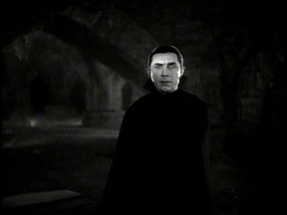|
|
Classic Movie Review: DraculaBy Josh SpiegelOctober 11, 2010
Something notable about Dracula is that, until an update to the film in the late 1990s, there was no score. In a genre that’s been known for killing any tension with screaming violin strings or booming drums, it was a little more than disconcerting to not hear any music, outside of the opening credits. Again, there was a score composed for the film’s restoration by Philip Glass, but I honestly wonder what it would have been like to watch this movie back in 1931, not knowing what to expect (presuming you didn’t read the novel or see the play) and watching a movie that’s permeated with dead silence. On the one hand, this makes the viewing experience even more haunting, as it makes the story seem more realistic. On the other hand, there are a few dead patches that could have been punctuated by music. Lugosi and Dwight Frye (as Renfield) are the most exemplary performers in a film that seems more interested in atmosphere than anything else. The set design, even for a film from so long ago, is stately and impressive, so much so that Browning makes sure we know it’s there, with so many wide shots squeezed in next to the extreme close-ups of Lugosi’s face (almost always lit with an effect to make his eyes seem more frightening). All of this aside, there’s no getting around the fact that sometimes, the original is best. Though I’ve seen other versions of Dracula, there’s something very economic and intense about this film, even if the film is more about style than substance. Lugosi is charismatic enough that you see why he coasted on the role for years. In two weeks, we’ll see if Boris Karloff and Frankenstein hold up as well.
|

|
|
|

|
Tuesday, May 7, 2024
© 2024 Box Office Prophets, a division of One Of Us, Inc.


